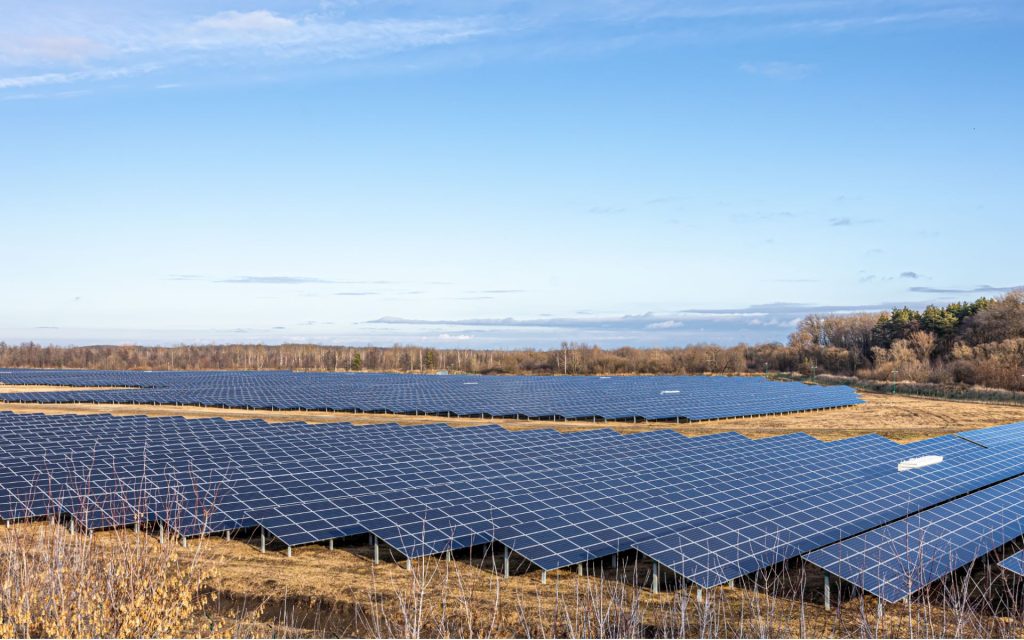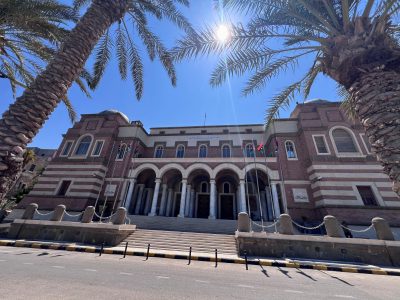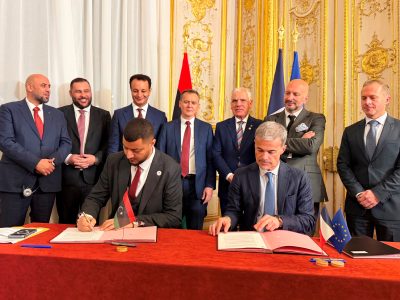Renewable Energy in Libya: Challenges, Opportunities, and the Path to a Green Future
Libya remains overwhelmingly dependent on oil and gas. In 2021, oil accounted for about 62% of Libya’s total energy supply and gas 34%, with renewables only ~4%. Virtually all electricity today comes from fossil fuel plants (UNDP notes the power system “exclusively depend[s] on hydrocarbon” feedstock). Decades of civil conflict have damaged generation and transmission infrastructure. Blackouts were once chronic – the UNDP reports Libya’s power sector was burning roughly 11 million tonnes of oil-equivalent per year for electricity and heat rather than exporting it. This paradox – enormous oil wealth but persistent domestic shortages – underlines the need to diversify away from hydrocarbons.
Renewable Resource Potential (Solar & Wind)
Libya lies at the heart of the sun belt. The Sahara covers 88% of Libya’s territory, giving it world-class solar irradiance: average annual sunshine exceeds 3,100–3,900 hours and photovoltaic (PV) yields range from about 1,753 kWh/kWp in northern oases to 2,045 kWh/kWp deep in the desert. In practical terms, one square kilometer of desert in Libya receives roughly the energy equivalent of 1.5 million barrels of oil per year from the sun. Wind resources are also good, especially along the coast: wind power density ranges from ~164 to 426 W/m² across the country. These resource maps confirm Libya’s huge theoretical potential for both solar PV and concentrated solar, as well as sizable wind farms in coastal or highland zones. (By contrast, as of 2021 Libya’s renewables share in final energy use was essentially zero.
Challenges to Renewable Development
Libya faces political and institutional barriers. The 2011–present conflict has produced rival governments and instability that threaten long-term projects. Public administration is weak and fragmented – UNDP and analysts note Libya’s energy sector lacks a unified Electricity Law or independent regulator, and responsibilities remain unclear. Infrastructure is another challenge: much of the grid needs repair or expansion, and Libya currently lacks the transmission and storage needed for large-scale renewables. Economic and financial obstacles loom large. Libya’s economy and budget are nearly 100% tied to hydrocarbons, and subsidized fuel/ power prices undercut the business case for new technologies. The investment climate is unsettled and credit scarce. Technical and human capacity must also improve: local expertise in project development and operations is limited and public awareness of renewables remains low).
A recent analysis identified “lack of infrastructure” and “dependence on fossil fuels” as the two most critical obstacles, followed by political instability, an unstable investment climate, weak regulation, and technological/public awareness gaps.
Opportunities and Renewable Projects
Despite these hurdles, Libya has begun to lay groundwork for change. In 2023 Libya’s renewable authority unveiled a strategy targeting 25% of electricity from renewables by 2030 (and 60% by 2050). One concrete sign is the Sadada solar project (500 MW), a joint venture of TotalEnergies, the national power utility GECOL and the Renewable Energy Authority of Libya. This plant is now in final design and slated to start construction in 2025. Such large-scale solar (and upcoming CSP or wind) projects signal serious commitment. Domestically, Libya’s peak demand is forecast to soar – perhaps 14 GW by 2030 – meaning renewables can play a role in meeting a fast-growing market.
Foreign partnerships are a key opportunity. Libya has signed memoranda with Malta and Turkey to develop renewables and export power. For example, a June 2023 Libya–Malta MoU envisions solar farms in Libya supplying green electricity via an undersea cable. Malta’s energy minister explicitly cited Libya’s “huge expanse of land and…huge resource of sun” as ideal for generating renewable energy to serve Malta and beyond. Similarly, by late 2024 Libya agreed a “Libya–Türkiye Renewable Energy Investment Agreement” to jointly build solar and wind farms with Turkish state banks and companies. These projects promise not only clean power but also jobs and know-how transfer to Libyans.
International support is arriving too. The UNDP has organized utility-scale solar training for Libyan officials, and GECOL is distributing smart meters to improve revenue and efficiency (laying the groundwork for future private PPAs). The shift by global oil companies is evident as well: TotalEnergies reports aiming for 30 GW renewables by 2030 and highlights Sadada as part of its global growth strategy. Taken together, Libya’s authorities and partners are exploring new financing (e.g. PPPs) and building institutional capacity, suggesting the renewable energy sector is starting to stir.
North African Peers
Compared to neighbors, Libya is still behind. Morocco has become a regional renewable leader: by 2023 it had over 4.5 GW of wind and solar capacity (about 38% of its power capacity). Morocco targets >50% of capacity from renewables by 2030, largely through competitive auctions and its MASEN “one-stop-shop” PPP framework. Egypt likewise has rapidly expanded renewables: as of 2021 Egypt deployed ~6.4 GW (mostly wind and solar), aiming for roughly 33% of generation from renewables by 2025 and over 50% by 2030. Both Morocco and Egypt also benefit from stable power regulators and healthy investment flows. By contrast, Libya’s renewable share remains near zero (around 0.01% of energy consumption in 2021 and it has only very modest operational solar/wind capacity today. This gap underscores Libya’s urgency but also that its neighbors’ policy models (firm targets, auctions, PPPs) could offer useful lessons.
Regional Trade, EU Demand and Cross-Border Initiatives
Europe’s energy shift is increasingly looking south, and Libya is in the mix. The EU is pushing to import North African green energy – particularly green hydrogen – to replace Russian fuels. A recent study estimated North Africa could export some $110 billion per year of green hydrogen to EU markets. Projects have been floated for hydrogen pipelines spanning the Mediterranean from Morocco through Libya to Egypt and onward to Europe. In the power sector, EU-backed plans envisage more transmission links: e.g. Spain–Morocco cables are being expanded, and projects for submarine links to North Africa (Italy–Tunisia, Italy–Greece) are under discussion. Libya has already taken small steps – it signed an agreement with Malta (through Italy) on an interconnector and has a 200 MW grid link with Egyp – but so fart no firm exports to Europe. An ECFR analysis notes that, unlike Morocco or Egypt, Libya currently “has no plans to export clean electricity to the EU”. Still, Libya’s neighbors (and indeed the EU) have signaled interest in tapping the region’s sun and wind: Morocco alone aims to triple renewables by 2030 and host one of the world’s largest green hydrogen factories. Libya could piggyback on these trends via shared grids or hydrogen hubs once domestic stability improves.
Policy Recommendations
Foe Libya to unlock its vast renewable energy potential, a comprehensive reform package will be essential, combining legal, economic, institutional, and technical measures. First and foremost, our country must establish a clear legal and regulatory framework. Passing an updated Electricity Law and creating an independent regulator or renewable energy authority would provide the rules, licensing mechanisms, and standards needed to guide investment. Transparent procedures for permits and grid access – drawing on successful models such as Morocco’s MASEN – would give developers the confidence to enter the market. At the same time, Libya needs to reform its economic incentives by gradually phasing out subsidies for fossil-fuel generation and adjusting tariffs to reflect real costs. Instruments such as feed-in tariffs, competitive auctions, tax breaks, or state-backed guarantees can make renewable projects financially viable and attractive to investors. Mobilizing private and international finance is another crucial step. Public–private partnerships and joint ventures with experienced foreign firms can bring both capital and expertise, while political risk insurance and legally binding contracts would reassure international partners. Infrastructure upgrades will also be necessary: oil revenues or donor funds should be invested in modernizing the national grid, extending transmission to renewable-rich regions, and integrating storage and balancing capacity to handle variable solar and wind output. Equally important is the development of local human capital. Expanding training programs, university curricula, and UNDP-style capacity-building initiatives would enable Libyan engineers and regulators to manage renewable projects effectively, while public awareness campaigns could foster broader acceptance of clean energy. Finally, Libya should leverage regional cooperation, aligning its strategy with Mediterranean and EU initiatives. Cross-border projects such as the Malta–Libya interconnector and Egypt–EU cable demonstrate the potential for integration, and in the long term, Libya could position itself as an exporter of surplus green electricity or hydrogen to European markets.
Implementing these reforms will be challenging, given Libya’s politics, but they are essential. Encouragingly, many building blocks are in place (ambitious targets, preliminary projects and MoUs, and a draft regulatory framework). By pushing ahead – for instance, by finalizing the Electricity Law, simplifying project approvals, and guaranteeing contracts – Libya can begin to attract capital and know-how. Over time, these changes could transform Libya from an oil-dependent power supplier into a regional renewables hub, bringing economic diversification, fewer outages, and clean exports.




